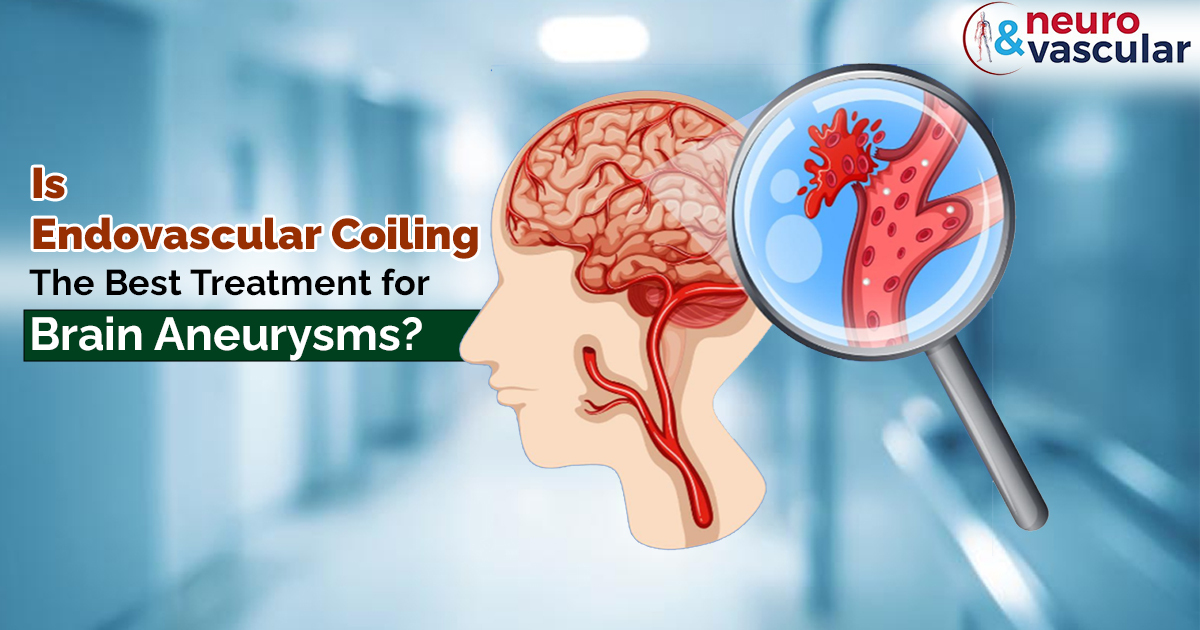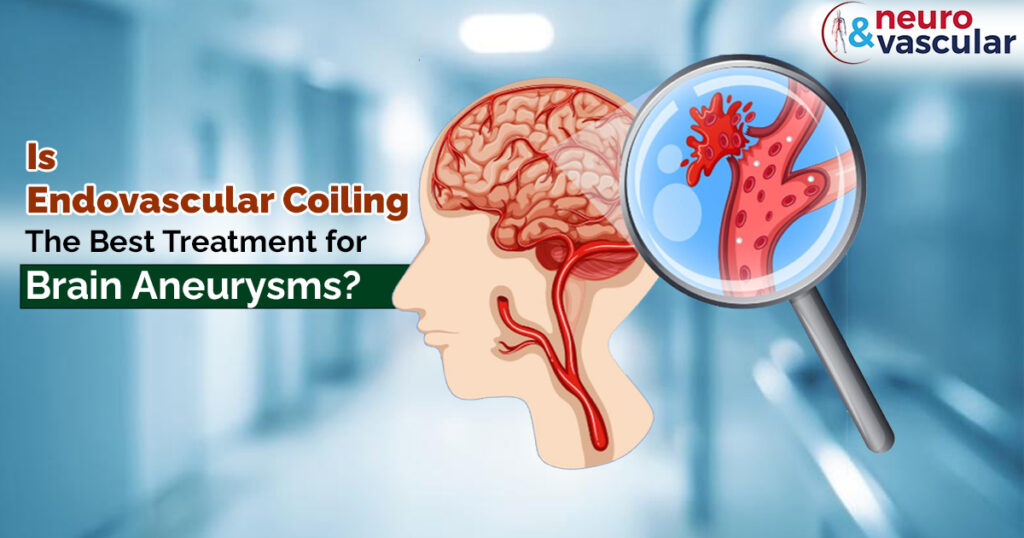
Is Endovascular Coiling The Best Treatment for Brain Aneurysms?

What is a Brain aneurysm?
A brain (cerebral) aneurysm is a bulging, weak area in the wall of an artery that supplies blood to the brain. In most cases, a brain aneurysm causes no symptoms and goes unnoticed. In rare cases, the brain aneurysm can burst, releasing blood into the skull and causing a stroke. When a brain aneurysm ruptures, the result is called a subarachnoid hemorrhage. Depending on the severity of the hemorrhage, brain damage or death may result. Aneurysm Coiling is the best treatment option for brain aneurysms.
What is aneurysm coiling?
Aneurysm Coiling eliminates the need to open the skull by accessing the aneurysm from inside the blood vessel. Small metal coils are inserted into the aneurysm through the arteries that run from the groin to the brain. The coils remain in the aneurysm and they are not removed. They stop blood flowing into the aneurysm and therefore reduce the risk of a bleed or a re-bleed.
Who is a Candidate for Endovascular Coiling?
The risk of rupture and the patient’s overall health must be taken into consideration while choosing an aneurysm treatment option, such as observation, surgical clipping or bypass, or endovascular coiling.
Coiling may be an effective treatment for:
- Ruptured aneurysms burst open and release blood into the space between the brain and skull, a condition called a subarachnoid hemorrhage (SAH). The risk of repeated bleeding is 35 percent within 14 days after the first bleeding. Timing of treatment is important and needs to be done within 72 hours of the first bleeding. Vasospasm (narrowing of an artery) is a common complication of SAH, which must be closely managed after treatment to prevent a stroke.
- Unruptured aneurysms may not cause symptoms and are typically detected during routine testing. People with a family history of brain aneurysms should have a screening test (CT or MR angiogram). The risk of aneurysm rupture is about 1 percent per year but may be higher or lower depending on the size and location of the aneurysm. When rupture occurs, the risk of death is 20 percent, and the risk of disability is 80 percent.
Ruptured brain aneurysm symptoms:
- Intense headache that comes on suddenly
- Loss of consciousness
- Nausea and vomiting
- Drowsiness
- Loss of balance in things like walking and normal coordination
- Stiff neck
- Sensitivity to light
- Sudden blurred or double vision
- Drooping eyelid
- Seizure
Unruptured brain aneurysm symptoms
- Dilated pupils
- Headache or pain above or behind your eye
- Blurred or double vision
- Drooping eyelid
- A hard time speaking
- Weakness and numbness in one side of your face
What Causes Brain Aneurysms to Rupture?
- High blood pressure
- Heavy lifting or straining
- Stress
- Medication
- Illegal drugs
Brain Aneurysm Diagnosis:
- CT scan
- MRI
- Angiogram
- Cerebrospinal fluid test
How is Coiling Procedure Performed?
When performing an endovascular coiling procedure, a neurointerventional radiologist accesses the aneurysm from within the bloodstream via the femoral artery in a thigh. After inserting a thin, flexible tube (catheter) into the femoral artery, the surgeon guides the catheter to one of the four arteries in the neck that lead to the brain. To precisely “steer” the catheter, the doctor creates a “roadmap” of the arteries with angiography, which involves injecting a special dye that makes blood vessels highly visible on an external monitor.
Once the catheter is in place, the doctor inserts a series of thin platinum wires that coil up when entering the aneurysm. The doctor in the coiling procedure will insert as many coils as needed to completely seal off the aneurysm. Over time, a clot will form inside the aneurysm, significantly reducing the risk of rupture.
Is it a Permanent Treatment?
Yes, In Endovascular coiling coils remain permanently in the aneurysm.
Brain Aneurysm Complications:
A ruptured brain aneurysm can be life-threatening and lead to:
- Cerebral vasospasm (reduced blood flow to the brain)
- Hydrocephalus (too much spinal fluid in the brain)
- Coma
- Permanent brain damage
- It bleeding again
- Hyponatremia (low sodium in your blood)
Brain Aneurysm Prevention:
- Stop smoking
- Eat a balanced diet
- avoid constant heavy lifting (stick with moderate exercise)
- Don’t use cocaine or other stimulant drugs
- Get help for any alcohol or drug use problems
- Keep your high blood pressure in control with medicine and lifestyle changes
Brain Aneurysm Prevention:
- Stop smoking
- Eat a balanced diet
- avoid constant heavy lifting (stick with moderate exercise)
- Don’t use cocaine or other stimulant drugs
- Get help for any alcohol or drug use problems
- Keep your high blood pressure in control with medicine and lifestyle changes
Frequently Asked Questions:
Q: Do all aneurysms need treatment?
A: No, all aneurysms don’t need to be treated. Treatment depends on the site, size and anatomy of an aneurysm.
Q: Is there any scar with coiling?
A: No, there is no scar with coiling.
Q: Can I have an MRI after coiling?
A: Yes, all titanium and platinum coils are MRI-compatible.
Q: If an aneurysm has been discovered, for how long has it typically been present?
A: That is unknown. Aneurysms may slowly enlarge over time, yet the rate of growth is not completely understood. Some aneurysms, typically smaller aneurysms, may remain quiescent for decades.
Q: What is the usual damage to the brain after an aneurysm bleeds?
A: Once an aneurysm bleeds, the chance of death is about 20% and the chance of some brain damage is about 66 %, even if the aneurysm is treated. If the aneurysm isn’t treated quickly enough, another bleed may occur from the already ruptured aneurysm.
About the Author:

Name: DR . SURESH GIRAGANI
INTERVENTIONAL RADIOLOGIST
DR. SURESH GIRAGANI CONSULTANT INTERVENTIONAL RADIOLOGIST at Apollo hospitals Jubilee Hills has more than sixteen years of clinical experience in vascular interventions with a special interest in neurovascular and peripheral vascular disease interventional procedures.